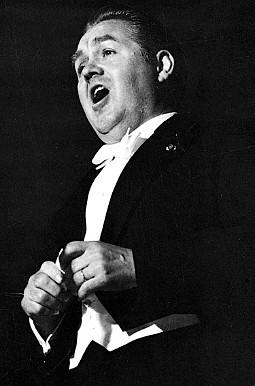
Jussi Björling
In opera, a diminuendo is a vocal tone that -on the same breath- changes from loud to soft without any noticeable break. The diminuendo at its most perfect state illustrates how a master singer always builds the loud voice on top of the head voice/falsetto. It is this harmonious mechanism that makes a beautiful diminuendo possible.
Open this playlist in spotify, here.
The exact clips I prepared for the recordings I list here are En Fermant Les Yeux – 2:20-3:20, Aida – 3:42-4:31, Caro Nome – 3:07-3:30, With All My Heart – 1:11-1:40, My Song For You – 1:58-2:20, Cortigiani – 2:00-2:25, E Lucevan Le Stelle – 1:04 – 1:45
This is one of the most beautiful opera arias ever written. My favorite version is with Beniamino Gigli in part 8, “the most poetic moments of opera.” In that section I will explain how beautifully poetic the words are.
This is one of the most stunning diminuendi on record that I have heard. Corelli takes a high Bb and diminishes it slowly from very loud to very soft.
This is a less well known soprano from a live Swedish recording in the 50’s. Even the lesser known singers in that day had great voices!
Again, my favorite singer! Jan Kiepura does have a Polish accent here, but we love him anyway (or even more). Here he takes a high B natural and diminishes it. You won’t hear this too often from tenors. This is a very difficult thing to do well.
What I am showing you here is the opposite of a diminuendo. Here, Jan Kiepura starts on a soft note and slowly swells it into a loud note. He does it so gracefully.
Some singers think that basses and baritones use the chest voice completely. Some maybe, but not the good ones! Here Leonard Warren shows the soft basis his baritone voice has.
This recording is very old. Don’t run away because of the technology! If you can make it through the old sounding recording, an unbelievable voice shines through! Also, don’t let the recording trick you into thinking the voice is smaller than it is!


